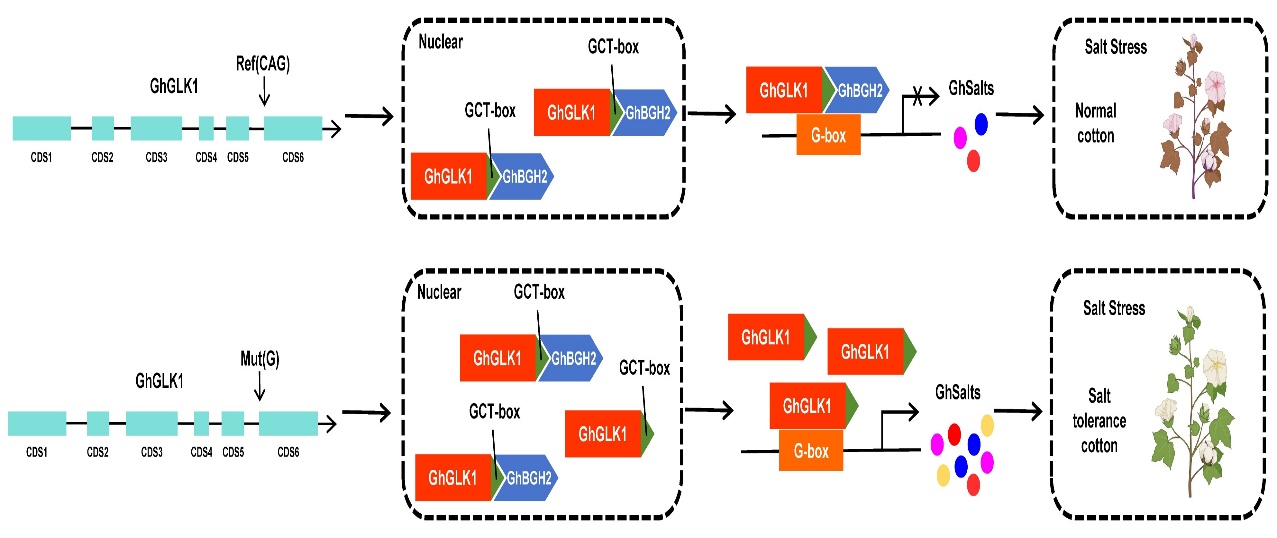Recently, a research consortium led by the Biotechnology Research Institute of the Chinese Academy of Agricultural Sciences (CAAS), in collaboration with the National Nanfan Research Institute, Zhejiang Normal University, and the Tobacco Research Institute, has successfully identified a novel salt-tolerance-related gene, GhBGH2, from cotton. The team elucidated the molecular mechanism by which GhBGH2 negatively regulates cotton's salt tolerance through its interaction with the transcription factor GhGLK1. The related findings have been published in the high-impact international journal Plant Biotechnology Journal.
As a vital source of textile fiber, cotton faces significant threats from soil salinity, a major abiotic stressor that compromises both yield and quality. Research into cotton's salt tolerance mechanisms is therefore crucial for safeguarding agricultural production.The study demonstrated that under salt stress conditions, gene-edited mutant cotton lines with disrupted GhBGH2 function exhibited markedly enhanced salt tolerance. Further mechanistic investigation revealed that the GhBGH2 protein interacts directly with the activation domain of the transcription factor GhGLK1. This interaction suppresses GhGLK1's ability to activate the transcription of downstream salt-tolerance genes. However, when GhBGH2 is mutated, this repression is lifted, allowing GhGLK1 to freely activate its target genes and thereby strengthen the plant's salt tolerance.This discovery provides a fresh perspective on the molecular basis of salt tolerance in plants and offers both theoretical foundation and genetic resources for the genetic improvement of salt-tolerant cotton cultivars.
The research paper's co-first authors are Dr. Wang Peilin, a postdoctoral fellow at the CAAS National Nanfan Research Institute/Biotech Research Institute; Ms. Wang Jiamin, a joint-training master's student at the CAAS Biotechnology Research Institute and Zhejiang Normal University; and Dr. Si Huan, an assistant research fellow at the Tobacco Research Institute. The corresponding authors are Professor Cheng Hongmei and Professor Guo Huiming from the CAAS National Nanfan Research Institute/Biotechnology Research Institute, and Professor Ma Bojun from Zhejiang Normal University. This work received support from several funding programs, including the National Key R&D Program of China on Biological Breeding(2023ZD04039), the Hainan Provincial Natural Science Foundation Youth Fund(325QN512), and the Nanfan Special Project(YBXM2415).

Link to the paper: http://doi.org/10.1111/pbi.70300
|